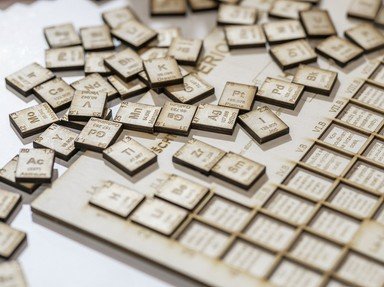Quiz Answer Key and Fun Facts
1. Mercury is liquid at room temperature, and can be seen slipping all around the place. Which of these other elements is also a liquid at room temperature?
2. Another way you can tell that mercury is a slippery element is the fact that it uses aliases, and even relies on one of its alternative names as the source of its modern chemical symbol. What is this alternative name?
3. Which group of people are responsible for associating the element mercury with the planet of the same name?
4. Like most slippery characters, mercury likes to lie hidden in the environment, concealed in the form of a compound to make it harder to spot. Which of these is the most common ore in which it hides?
5. You wouldn't think that a self-respecting element would present multiple personae to the world, but that is the case for mercury, which has no fewer than seven stable isotopes, none of which makes up more than a third of the naturally-occurring atoms of mercury. Which isotope is the most abundant, showing its face nearly 30% of the time?
6. Which of these statements about the toxicity of mercury is NOT correct?
7. If that slippery mercury has escaped from captivity, and you want to round it up again, you will need a mercury spill kit. Which of these is the yellow flaky material that is likely to be one of the components of your kit?
8. Mercury will dissolve many other metals, in a process known as amalgamation. This has proved to be useful in the mining and extraction of a number of valuable metals. Which metal did the Spanish extract from its ore in South America using the patio process, developed in 1554?
9. Sometimes the fact that mercury dissolves many other metals to form an amalgam is useful; sometimes it can be a problem. What metal has traditionally been used to make containers for mercury, because it does not form an amalgam?
10. Which of these devices used for domestic lighting usually contains mercury?
Source: Author
looney_tunes
This quiz was reviewed by FunTrivia editor
rossian before going online.
Any errors found in FunTrivia content are routinely corrected through our feedback system.


